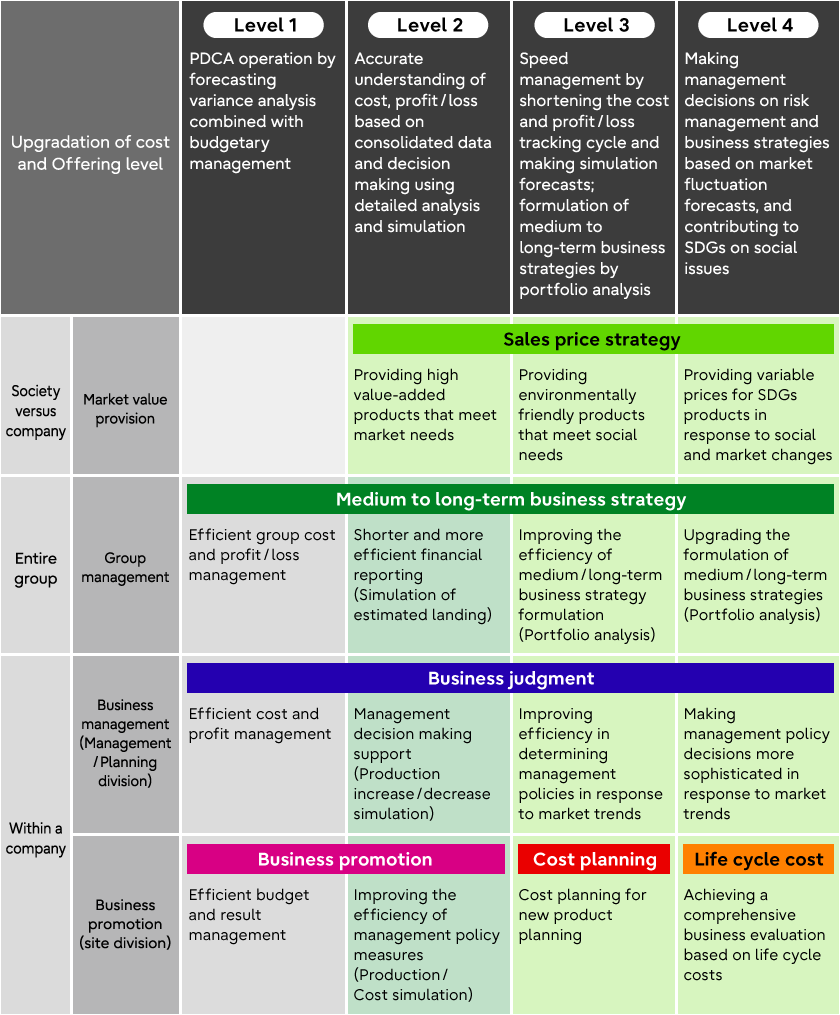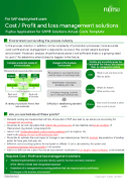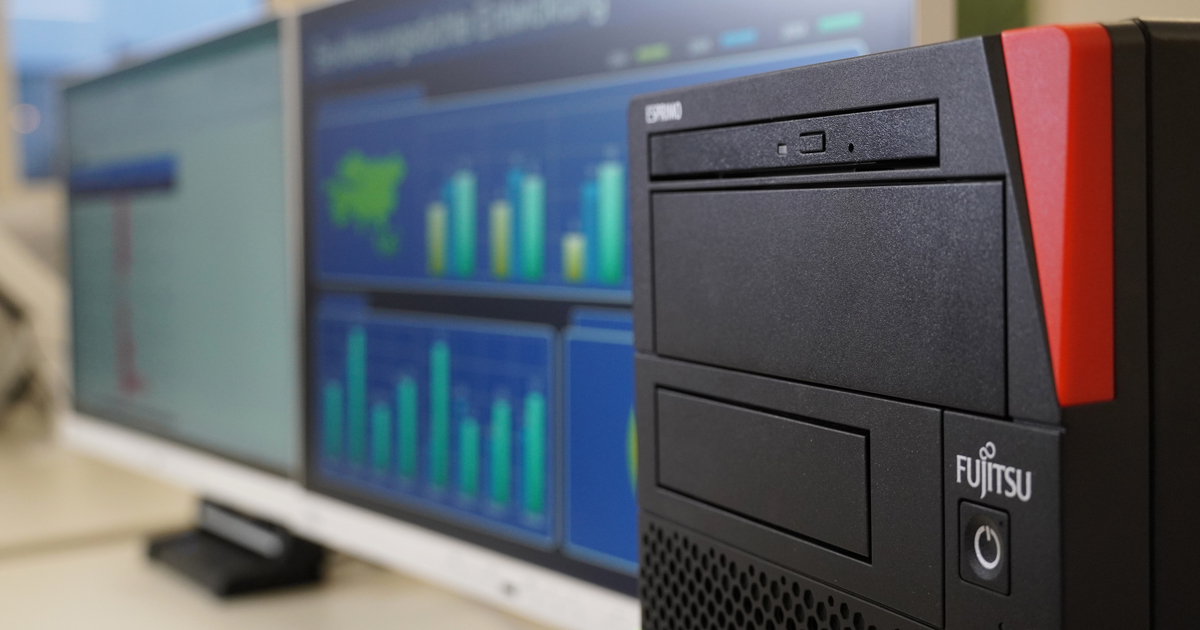- Fujitsu Manufacturing Solutions
- Offerings
- Production Preparation Sophistication Offering
- Upgradation of cost and production Offering
- Solutions
- Fujitsu Application for SAP® Solutions
- Production Planning
Fujitsu Application for SAP® Solutions Detail Scheduling Template - Build-to-order manufacturing
Fujitsu Application for SAP® Solutions Mass Customization Template - Actual Cost
Fujitsu Application for SAP® Solutions Actual Costs Template - SAP S/4HANA® Manufacturing for Production Engineering and Operations (SAP PEO)
- SAP® Digital Manufacturing (SAP DM)
- SAP® Integrated Business Planning (SAP IBP)
- SAP® Portfolio and Project Management (SAP PPM)
- Case study
- SAP S/4HANA® Manufacturing for Production Engineering and Operations (SAP PEO)
- Kawasaki Heavy Industries, Ltd.
- Kawasaki Heavy Industries, Ltd. (Fujitsu Uvance)
- Kawasaki Heavy Industries, Ltd. (SAP Website)

- SAP® Digital Manufacturing (SAP DM)
- Anaplan
- Fujitsu Supply Chain Planning Solutions
(Old name: FUJITSU Enterprise Application GLOVIA smart PROFOURS
FUJITSU Manufacturing Industry Solution COLMINA scheduler / PSI)
- FUJITSU DIE-TECH CORPORATION OF THE PHILIPPINES Innovative Case Study Report on Production Planning Operations in the Global Supply Chain GLOVIA smart PROFOURS (PDF)

- Successful application of "PROFOURS" in FUJITSU DIE-TECH CORPORATION OF THE PHILIPPINES (YouTube)
- Tohshin Seiki Co.,Ltd. (PDF)

- RISU PACK CO., LTD. (PDF)

- GOLD PAK CO., LTD. (PDF)

- Fujitsu Limited (PDF)

- Fujitsu Supply Chain Planning Solutions
- Fujitsu ERP Solutions for Process
(Old name: FUJITSU Enterprise Application GLOVIA ProcessC1)
- TOAGOSEI CO., LTD. (PDF)

- ASAHI BREWERIES, LTD. (PDF)

- NIHON NOHYAKU CO.,LTD. (PDF)

- Nippon Light Metal Company, Ltd. (PDF)

- ADEKA Corporation (PDF)

- Showa Denko K.K. (PDF)

- Fujitsu Digital Manufacturing FJVPS
- Fujitsu ERP Solutions for Process
- Catalog
- List of introductory materials on Planning Sophistication Offering
- Supply Chain Planning Solutions for Profit Maximizing S & OP Processes
SAP® Integrated Business Planning (SAP IBP) - Integrated Production Planning Solution for Supply Chain DX
GLOVIA smart PROFOURS
- List of introductory materials on Manufacturing execution management sophistication Offering
- List of introductory materials on Upgradation of cost and production Offering
- List of introductory materials on Upgradation of cost Offering
- For SAP deployment users
Cost / Profit and loss management solutions
Fujitsu Application for SAP® Solutions Actual Costs Template
- List of introductory materials on Upgradation of production Offering
- Fujitsu best add-in solution for flexible use of SAP
Fujitsu Application for SAP® Solutions Mass Customization Template - An ERP solution for Assembly Manufacturers Realize Mass Customization through Product Configuration Management
Fujitsu Application for SAP® Solutions Mass Customization Template (SIEMENS) - Provided by Fujitsu SAP Engineering Manufacturing Execution Solution
SAP S/4HANA® Manufacturing for Production Engineering and Operations (SAP PEO) - Solutions to manage all multiple parallel planning, development, and investment projects
SAP® Portfolio and Project Management (SAP PPM) - Fujitsu’s SAP Manufacturing Solutions
- Video (YouTube)
- List of videos (YouTube) related to Planning Sophistication Offering
- Successful application of "PROFOURS" in FUJITSU DIE-TECH CORPORATION OF THE PHILIPPINES
- Fujitsu Manufacturing DX journey to the best
- An Integrated Planning and Management Solution “PROFOURS” : A reliable field partner
- GLOVIA smart PROFOURS - Integrated production planning system for improving work efficiency
- Production Scheduling Software " Fujitsu Enterprise Application GLOVIA smart PROFOURS"
- List of videos (YouTube) related to Upgradation of cost and production Offering
- Fujitsu Manufacturing DX journey to the best
- Fujitsu Application for SAP Solutions makes mass customization for manufacturing possible
- Fujitsu Application for SAP® Solutions Mass Customization Template
~Product Concept Version~ - Fujitsu Application for SAP® Solutions Mass Customization Template
~Quotation Version~ - Fujitsu Application for SAP® Solutions Mass Customization Template
~Order Navigator Version~ - Introduction Fujitsu Manufacturing Industry Services
- Fujitsu Transforming the future of manufacturing
- List of videos (YouTube) related to Manufacturing execution management sophistication Offering
- Fujitsu Manufacturing DX journey to the best
- How to keep manufacturing operations compliant
- Smart Manufacturing Customer References with COLMINA and SAP Offerings ”Collaboration with SEMENS”
- FNC uses Fujitsu SAP to build the factory of the future
- Reimagine your business with Fujitsu and SAP : KAWASAKI case study
- Transform your manufacturing to next generation with Fujitsu SAP Industry 4.0
- SAP® Manufacturing Integration and Intelligence (SAP MII) Solution proposed by FUJITSU
- Events and Seminars
Realization of data driven management
Upgradation of cost Offering

What is the Upgradation of cost Offering ?
Fujitsu's Upgradation of cost Offering is specifically targeted to the process industry.In the process industry, due to changes in the price of imported raw materials and manufacturing conditions such as seasons, the manufacturing instruction does not match the actual results. Therefore, it is necessary to consider the complex production process and industry characteristics of the reverse tree production system.In addition, by calculating highly accurate manufacturing costs and profit/loss, and making further use of the highly accurate data, it is necessary to upgrade data-driven management and business activities.Providing support for data-driven management using customers' cost and profit/loss data.
What are the challenges in data-driven management of cost and profit/loss data in the process industry?
The data-driven management of the process industry is to promote appropriate management decisions and business activities by accurately grasping the actual cost and profit/loss of each product in an uncertain market environment, visualizing the cause of the actual difference and points of improvement, and predicting various changes.
Upgradation of cost Offering can achieve
Providing value through offering tailored to business strategy
Upgradation of cost Offering accurately calculates and provides cost and profit/loss by product in line with the actual conditions of complex manufacturing processes peculiar to the process industry, and realizes "driven management" based on manufacturing cost and profit/loss.

Realization of data driven management
Upgradation of cost solutions
Business example of Upgradation of cost
Watch video of [Upgradation of cost]
Introduction of Fujitsu Application for SAP® Solutions Actual Costs Template (2 min)
Detailed actual cost templates can be utilized to understand fluctuations in raw material prices and manufacturing results that do not follow the instructions.
Download the free catalog here
For SAP deployment users
Cost / Profit and loss management solutions
Fujitsu Application for SAP® Solutions Actual Costs Template

Enquiries and consultation about Fujitsu Digital Manufacturing FJVPS
Company uses SSL technology for security purposes.













